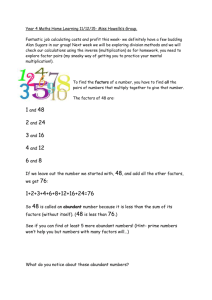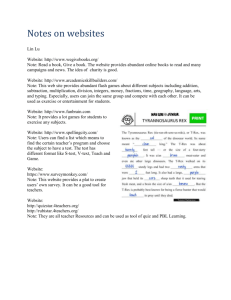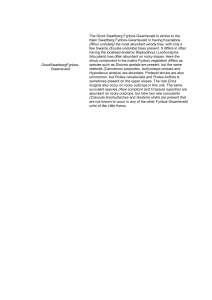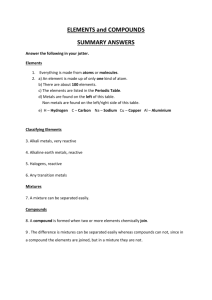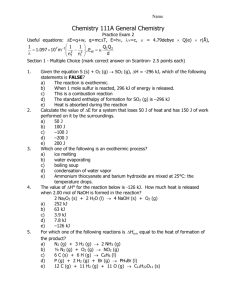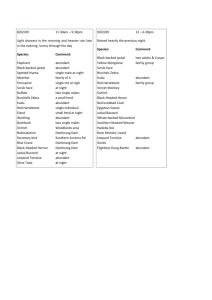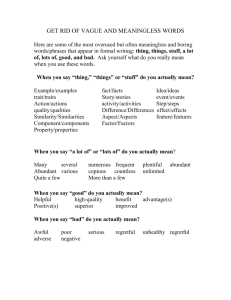Ch. 19:Representative Elements Groups 1A-4A
advertisement
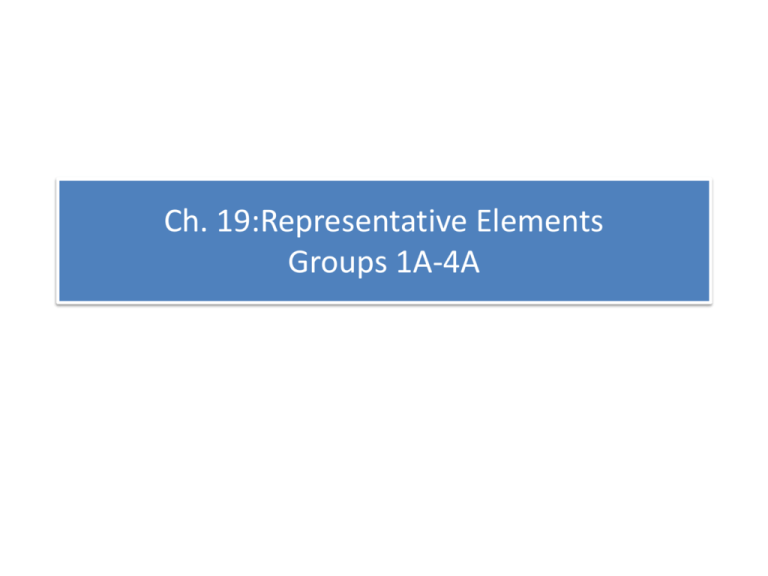
Ch. 19:Representative Elements Groups 1A-4A Representative Elements Groups 1A 8A – Chemical properties determined by valence electrons in level s & p Transitions metals (center of table) – Result from filling d- orbitals Lanthanides & Actinides -- result from filling of 4f and 5f orbitals respectively • Heavy black line divides the metals from nonmetals • Elements on either side of line exhibit metallic AND nonmetallic properties • These are called metalloids or semimetals (Si, Ge) Big Ideas Representative Elements a. Same column, same family, similar chemical properties b. Typically, FIRST element is most different than the others H, Be, B, C, N, O, F c. Metallic properties increase down column(esp 4A) d. Other properties vary regularly up/down column e. Majority of naturally occurring elements are in compounds Group 1A • ns1 valence e• Easily lose valence e- (except for hydrogen) • Alkali Metals • Form M+ cations • React vigorously with H2O to form M+ and OH- ions AND H2 gas Group 1A- Hydrogen • H = most abundant element in the universe (@3/4 of all mass!) • H2 (g) is rare in Earth’s atmosphere • H = 3rd most abundant element in human body (10% by mass) • Commercial production of H2 from methane (CH4), water@ 700C, 1300F Group 1A cont’d • Metals (Li, Na, K…), Alkali Metals • Form oxides/hydrides that are all basic in water; • (Metal + H2O OH- (aq)… – NaH (hydride) H2(g) + …. – Na2O (oxide) – Na2O2 (peroxide) – NaO2 (superoxide) O2(g) + …. Group 2A • • • • ns2 Oxides are also basic in water; Metal + H2O OH-(aq)…. Ca2+ & Mg2+ are most common metals in human body • Ca2+ & Mg2+ are most common ions I “hard” water • Ca2+ precipitates fluoride out of water (Ksp = 4x10-11) • Marble CaCO3, converted to CaSO4 by acid rain Group 3A • ns2np1 • Shows increasing metallic character moving down the group • Boron-hydrogen covalent compounds = “boranes” – VERY reactive, electron deficient – Unusual B-H-B bonds (fig 19.8, p889) – example Group 3A-Aluminum • Al = 3rd most abundant element in Earth’s crust, oceans, air (8% by mass) • Al = most abundant metal on earth (Al2O3) • Expensive to recover, consumes @ 5% of all electricity in US! • Al is very reactive, forms oxide “skin” that stops reaction Group 4A • ns2np2 • Silicon – Si = 2nd most abundant element in Earth’s crust, oceans, air (26% by mass) – Si as oxides (silica, silicates) Group 4A- Carbon C = 2nd most abundant element in human body (@18%) Carbon- Diamond Carbon-Graphite Carbon monoxide bonds to hemoglobin 100x more than oxygen Carbon dioxide dissolved in water is acidic Sugar (CH2O) ferments with yeast to form ethanol Group 4A- Lead Lead Poisonous!! Lead in gasoline was tetrahedral lead #1 use: batteries Ch 20 –Group 5A Nitrogen 1. N2 = most abundant element in air(78% by volume) 2. Very unreactive as N2; triple bonded 3. Nitrogen fixation: N2 compounds containing N (bacteria, human activity) a. “fixed” nitrogen encourages algae growth b. amount of “fixed” nitrogen is currently increasing. Nitrogen cont’d 4. Explosives: Many compounds with N (+H, C, and/or O) N2, H2O and/or CO2 gases –EXOTHERMIC! a. airbags b. Trinitrotoluene, TNT and nitroglycerin 5. Smog; at high T& P: N2 +O2 2NO (in air NO2 = brown gas) Group 5A cont’d Phosphorus 1. Biological buffer system:H2PO4- HPO42- + H+ 2. 3. ATP + H2O ADP + HPO42- + Energy Reaction structures Group 6A Group 6A-Oxygen O = most abundant element in human body O = most abundant element in earth’s crust, oceans, air (49% by mass) O2 = 2nd most abundant element in air (21% by volume) Ozone = O3 1. ozone layer absorbs U.V. light in upper atmosphere 2. highly toxic; antibacterial properties Group 6A cont’d Sulfur Acid rain: 1. S (fuel, esp. Diesel & Coal) + O2 SO2 2. SO2 + O2 SO3 (catalyzed by dust & particles in air) 3. SO3 + H2O H2SO4! ACID rain ! Selenium & cancer ? Polonium alpha particle emitter; murdered Russian ex-spy Litvinenko chemically like Oxygen! Group 7A Halogens I. Found in nature as X2 or XII. X + X X2 (quickly) III. Strong oxidizers; want to remove electrons from other atoms: Cl + Cu+ -- Cl- + Cu2+ Fluoride 1. strong acids: HCL, HBr, HI, but NOT HF 2. Generally soluble in salts: chlorides, bromides, but NOT Fluorides 3. Entropy does not favor F-(aq) Group 8A “Noble Gases” a. generally unreactive; NO compounds containing He, Ne, or Ar b. recently, found compounds of Xe and Kr with F and O
